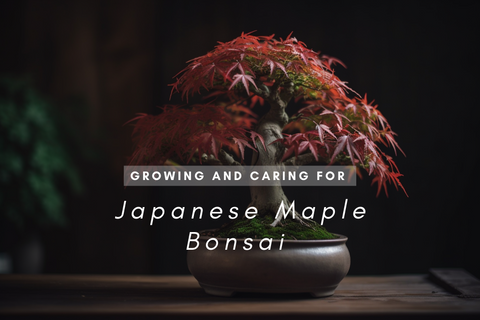The Ultimate Guide to the Japanese Katana: A Must-Read for Samurai Sword Enthusiasts
As a self-proclaimed sword fanatic, there's nothing I love more than delving into the rich history and cultural significance of different types of blades. And when it comes to swords, it's hard to top the iconic Japanese katana.
But before we dive into the details of this legendary weapon, let's start with the basics:
What is a Katana?
A katana is a type of Japanese sword with a curved, single-edged blade that is traditionally made of tamahagane (a type of high-carbon steel). The blade ranges from around 23.6 inches to 29.5 inches in length and is worn edge-up in a tachi style (which is different from the way European swords are worn). The hilt of the katana is long enough to accommodate two hands, and the handle (tsuka) is often wrapped in rayskin and silk or cotton cord (tsuka-ito).
The katana is known for its distinctive appearance and superior cutting ability, and it has played a significant role in Japanese culture for centuries. It's often associated with the samurai, who were the warrior class of ancient Japan. The samurai wielded the katana as their primary weapon and carried it with them at all times, even inside their homes.
History of the Katana
The katana has a long and storied history that dates back to the Heian period (794-1185) in Japan. During this time, Japanese swords were known as tachi and were worn edge-down, with the cutting edge facing downward. The tachi evolved into the katana over the course of several centuries, and by the Muromachi period (1392-1573), the katana had become the dominant type of sword in Japan.
One of the key factors in the development of the katana was the introduction of the folding process to Japanese sword-making. This technique, which involved folding and hammering the steel to create a layered blade, allowed for a stronger, more durable sword. The katana also benefited from the introduction of the differential tempering process, which involved heating and cooling different parts of the blade to different temperatures to create a hard edge and a softer spine. This process gave the katana its signature curved shape and superior cutting ability.
Forging a Katana: A Complex and Artistic Process
The process of forging a katana is complex and follows traditional methodology. The blade is made of a special steel called tamahagane, which is formed by hammering together several pieces of iron and folding them repeatedly to increase its strength and flexibility. This process is known as "folding" and can be done multiple times to further improve the blade's quality. Once the desired shape is achieved, the blade is sharpened and polished. The curvature, handle length, and shape of the guard are also taken into account when forging a katana. The entire process is highly skilled and requires the expertise of a trained blacksmith, or swordsmith.
Styles of the Katana: Tachi and Uchigatana
There are two main styles of the katana: the tachi and the uchigatana. The tachi is a longer and more curved version of the katana that was predominantly used by samurai on horseback. It was worn with the cutting edge facing downward and was used for attacking from above. The uchigatana, on the other hand, is a shorter and less curved version of the katana that was worn with the cutting edge facing upward and used for more close-quarters combat. The uchigatana eventually evolved into the katana we know today.
Cultural Significance of the Katana
In addition to its practical use as a weapon, the katana holds a deep cultural significance in Japan. It's often seen as a symbol of honor, loyalty, and samurai spirit, and it has played a central role in Japanese art, literature, and film.
One of the most famous examples of the katana's cultural significance is the Japanese code of chivalry known as bushido, or "the way of the warrior." This code, which was followed by the samurai, emphasized the virtues of honor, courage, loyalty, and self-discipline. The katana was seen as a physical embodiment of these virtues, and it was treated with the utmost respect and care.
The katana is also a popular subject in Japanese art and literature, and it has been depicted in countless paintings, sculptures, and stories throughout the centuries. In modern times, the katana has been featured in numerous films and video games, further cementing its place in popular culture.
How to Choose a Katana
If you're in the market for a katana, there are a few key factors to consider when choosing the right sword for you.
-
Blade material: The blade of a katana is traditionally made of tamahagane, a type of high-carbon steel that is created through a specific process involving the use of clay and fire. Some modern katanas are made with other types of steel, such as 1095 carbon steel or stainless steel. Each type of steel has its own benefits and drawbacks, so it's important to do your research and choose a blade material that meets your needs and preferences.
-
Blade length: The length of the katana's blade can range from 23.6 inches to 29.5 inches, with 27 inches being the most common length. The ideal blade length for you will depend on your height, build, and intended use for the sword. A longer blade may be more suitable for cutting practice, while a shorter blade may be more comfortable for everyday carry.
-
Blade type: There are two main types of katana blades: shinogi-zukuri and hira-zukuri. Shinogi-zukuri blades have a ridge line (shinogi) that runs down the center of the blade, while hira-zukuri blades are flat and have no ridge line. Both types of blades have their own unique characteristics, and the one you choose will depend on your personal preferences and intended use for the sword.
-
Handle material: The handle (tsuka) of a katana is typically made of wood and wrapped in rayskin and silk or cotton cord (tsuka-ito). Some katanas have handles made of other materials, such as bone or antler, or with decorative elements like inlaid gold or silver. The handle material and design can have an impact on the overall balance and feel of the sword, so it's important to choose one that meets your needs and preferences.
Katana Training and Practice
If you're interested in using your katana for cutting practice or training purposes, it's important to find a reputable instructor or dojo (training facility) that can provide proper guidance and instruction. Training with a katana can be a physically demanding and potentially dangerous activity, so it's essential to follow proper safety protocols and to use caution at all times.
Some common techniques and practices for katana training include:
-
Kata: Kata is a term that refers to pre-arranged forms or sequences of movements that are used to practice and refine specific techniques or strategies. Kata can involve solo drills or partner drills, and they are often used to teach proper form and body alignment, as well as to develop muscle memory and reflexes.
-
Cutting practice: Cutting practice, also known as tameshigiri or "test cutting," involves using a live blade to cut through targets made of straw, bamboo, or other materials. This type of practice is typically reserved for advanced students who have mastered proper form and technique, and it is typically supervised by a skilled instructor.
-
Sparring: Sparring, also known as kumite, is a type of simulated combat that involves two people practicing techniques and strategies against each other. Sparring can involve the use of protective gear and padded swords, and it is typically used to develop quick reflexes, strategic thinking, and adaptability.
It's worth noting that katana training and practice can vary significantly depending on the style or tradition being followed. Some styles may place a greater emphasis on kata, while others may focus more on cutting practice or sparring. It's important to research different styles and traditions and to choose one that aligns with your goals and interests.
Katana Collecting and Appreciation
For those who are interested in katanas as collectibles or art pieces rather than as functional weapons, there are a few key factors to consider when building a collection or choosing a katana for display.
-
Authenticity: One of the most important factors for collectors is authenticity. Authentic katanas are typically made by skilled swordsmiths using traditional techniques and materials, and they often have a certificate of authenticity or other documentation to verify their provenance. It's important to be aware of the risks of purchasing counterfeit or reproduction katanas, as they may not have the same level of craftsmanship or value as authentic pieces.
-
Rarity and historical significance: Some katanas may be more desirable to collectors due to their rarity or historical significance. For example, a katana that was owned by a famous samurai or that was used in a significant event may be worth more to collectors than a more common or ordinary sword.
-
Condition: The condition of a katana can also be an important factor for collectors. A katana that is in good condition with minimal wear or damage may be worth more than a katana that is heavily worn or damaged.
-
Aesthetics: Finally, the aesthetics of a katana can be a key factor for collectors or those who appreciate katanas as art pieces. The design of the blade, handle, and other elements of the katana can all contribute to its overall visual appeal.
Rules Surrounding Katana Ownership
As a lethal weapon, katan ownership and trade have restrictions that vary by country. In some countries, it is illegal to buy, sell, or carry a katana without a permit. Other countries allow katanas to be bought, sold, and owned, but have restrictions on public display and use. Additionally, katanas are generally considered weapons and must be stored and maintained properly to prevent injury or damage.
The Japanese katana is a truly iconic weapon with a rich history and cultural significance. Whether you're interested in using a katana for training, collecting, or simply appreciating its beauty and craftsmanship, I hope this guide has provided you with some helpful information and inspiration. Happy sword-collecting!
Tanto Knives
The tanto knife is a traditional Japanese dagger that was commonly used by samurai warriors in feudal Japan. The tanto's unique blade design, characterized by its sharp point and sturdy construction, made it an essential tool for both everyday use and self-defense.
Samurai warriors carried the tanto knife as a secondary weapon, primarily used for close combat and self-defense. The sharp point of the tanto blade was designed to pierce through armor, making it a formidable weapon in battle. The tanto's short blade also made it a useful tool for performing everyday tasks, such as cutting food or preparing materials for archery.
In addition to its practical uses, the tanto knife was also considered a symbol of status and honor among samurai warriors. The art of tanto-making was highly respected and tanto knives were often passed down through generations as family heirlooms.
Today, the tanto knife remains a popular choice among collectors and enthusiasts of Japanese culture. At Spirit Japan, you can find our quality Japanese tanto knives, made by skilled craftsmen using traditional techniques. Visit https://www.spiritjapan.com/products/japanese-tanto-knives to browse our tanto knives to add to your collection.



